I might step on a few toes with this, but I’m going to let you in on a pet peeve of mine. If you’ve spent any amount of time reading about barefoot shoes, I’m sure you’ve seen the ubiquitous images comparing the benefits of wearing barefoot shoes vs. the hazards of conventional footwear. The photos will show a foot in a conventional shoe with the toes crammed mercilessly into a narrow toe box, while the foot in the barefoot shoe has plenty of wiggle room in a wide, foot-shaped toe box. While I understand the point barefoot shoe advocates are trying to make, the issue I have with these images is that the shoes are often several sizes too small.
I can’t count the number of times I’ve seen illustrations where the toes are very nearly touching the end of the shoes, both in the “bad” examples and in the “good” ones. I’ve even seen some cases where the “bad” shoe is actually shorter in length than the foot in question, which really makes me scratch my head.
If barefoot shoe proponents were trying to spread awareness about the dangers of wearing the wrong shoe size, their point would be well made. But this is not the message these images are meant to convey. The purpose of these images is to show that the toe boxes on conventional shoes are tapered and push the toes together, but the problem is often exaggerated by squeezing the foot into shoes that are either 2-3 sizes too small, or are too narrow, completely ignoring the fact that wide width shoes exist.
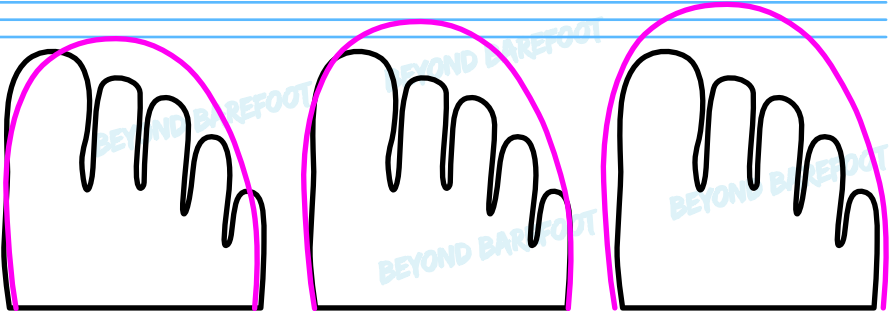
To be clear, most conventional footwear is designed to push the toes in to varying degrees, but there can be no doubt that wearing shoes that are too small is only going to exacerbate the issue. If this is the way many people are wearing their shoes, it’s no wonder foot problems are so common. According to some estimations, up to 63-72% of people are wearing shoes that don’t fit properly, so perhaps that’s not too surprising.
The “thumb’s width” rule and its limitations
I touched on this aspect of shoe fitting in a previous post, but it’s important enough that it bears repeating. Shoe fitting is a complex topic that unfortunately gets oversimplified into the maxim that you should have a thumb’s width of extra space (approximately 10-15mm) from the end of your toes to the end of the shoe.
The truth is, a thumb’s width is the minimum amount of space you should have, but depending on how tapered the toe box is, you should have a lot more space than that to prevent the toes from getting squished. 10-15mm is the generally recommended amount for shoes that have a relatively wide, rounded toe shape. For more tapered or pointed toe boxes, however, you should have closer to 30mm and possibly even more.
The toe box needs to be long enough to provide adequate space in front of the toes, along the sides, and also above, so that the shoe doesn’t push down on the big toe. Shoes with a toe profile that gradually slopes down need to be much longer than a shoe that comes to a blunt end.
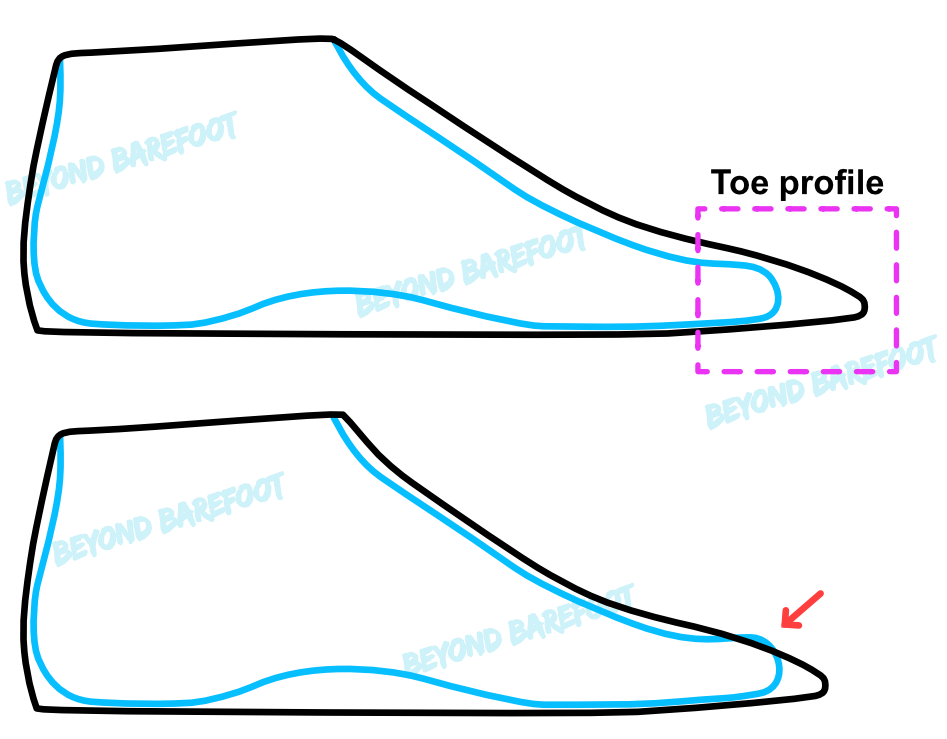
Shoe width matters
When you go shoe shopping in the US, the standard width offered for women’s shoes is “B” and for men (and unisex) it’s “D.” Although many brands do offer wider options, it seems that the footwear industry needs to update what it considers to be the most common foot widths—at least when it comes to women’s shoes—as there’s evidence to suggest that over 85% of American women are wearing shoes that are too narrow for their feet.1
The barefoot shoe community tends to dismiss wide width shoes because they think shoes need to be foot-shaped to be healthy, and because wide width shoes expand in the heel and in the ball of the foot, which can cause fit issues for some people.
Wide width shoes are primarily intended for people whose feet are wide overall. Another common foot type is wide in the forefoot and narrow in the heel, which is called a “combination” foot because it’s actually two different widths.
If you have combination feet, you might have no problem wearing wide width shoes that are adjustable around the ankle in the form of laces or straps. With slip-on shoes like loafers and ballet flats, however, the heel area might be far too loose to stay on the foot.
From what I’ve seen, it seems like a large portion of people who get into barefoot shoes have combination feet. This might be because they have such a hard time finding shoes that are wide enough in the forefoot while also being narrow in the heel, which is a shape commonly offered by barefoot shoe brands. Although they can be harder to find, there are conventional brands that make shoes on combination lasts. It’s fine if people want to wear barefoot shoes, but I’m sure there are many who aren’t aware other options exist.
If you have difficulty fitting into regular width shoes, my advice would be to not let the dogma of the barefoot shoe community dissuade you from at least trying conventional shoes in a wide or combination width, so you can judge for yourself whether they work for you or not.
As an example, in the photo below on the left, you can see that the toe box on these Vans sneakers in regular width (left foot) is much more tapered than the wide width version (right foot). You can also see the approximate fit difference between the two widths in the image on the right.
Not all conventional shoes are going to kill your feet. True, there are many shoes with short, pointy toe boxes that would make pretty much anyone’s toes numb, but just because a particular shoe isn’t foot-shaped doesn’t necessarily mean it wouldn’t work in the right size and width combination.
Determining if a shoe is a good fit
When looking for shoes, a few things to look out for are:
Your toes should have some wiggle room and should not feel restricted. Toes should never touch the end of the shoe, even when walking downhill
Shoes should feel secure on your feet but not uncomfortably snug, nor should they feel too loose around the ankles
They shouldn’t feel tight across the top of the forefoot, but there also shouldn’t be so much excess material that you can easily grab and pinch it
Shoes shouldn’t press uncomfortably on your instep (the bone on the top middle part of your foot)
Another important aspect of shoe fitting is the measurement from the heel to the ball of the foot, also known as the “arch length.” If the arch of the shoe is longer than your arch, your foot might sit too far forward in the shoe, causing gaping at the heel, or you might experience uncomfortable pressure in the area indicated in the illustration below on the right. Sometimes trying to size up to get enough space for the toes can result in the arch length increasing too much. The black dashed line represents the heel-to-ball measurement of the foot.
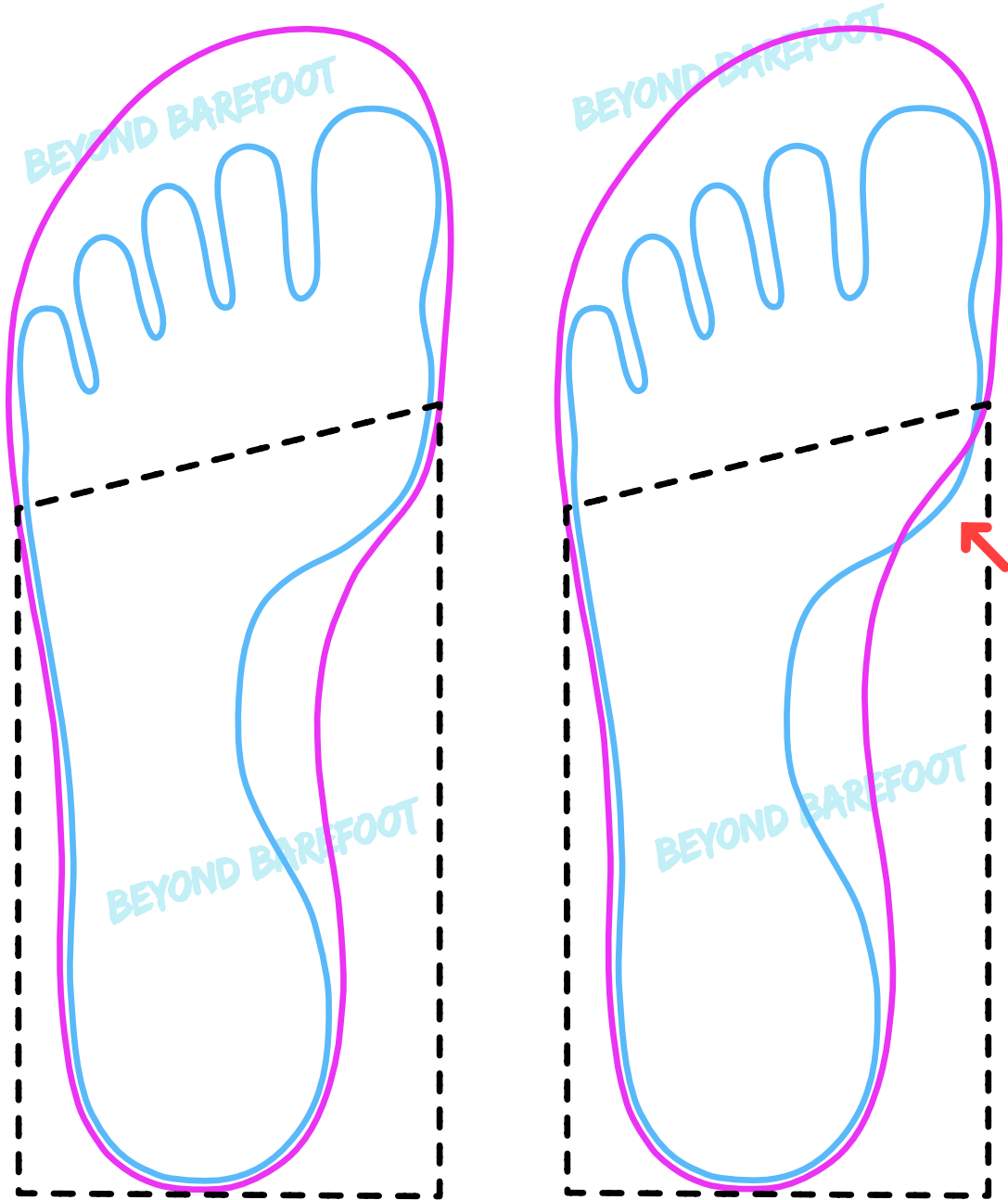
Taking the insoles out of your shoes and standing on them is not an accurate guide for determining if the shoe is wide or long enough because the insole is usually narrower and shorter than the inside of the shoe, but it might give you an idea of where your foot is sitting relative to the shoe arch.
If you experience any of the following, it might be an indication that you’re wearing ill-fitting shoes:
Blisters, corns, callouses, ingrown toenails, blackened toenails
Foot conditions like metatarsalgia, Morton’s neuroma, or bunions/bunionettes
Blowing holes in your shoes prematurely at the big toe or pinky toe, particularly in fabric shoes
The sides of your feet spilling over the sides of the shoes
A sense of relief after taking off the shoes
It’s important that the shoes you wear every day are comfortable, have plenty of toe room, and don’t rub or pinch anywhere. If you occasionally wear dress shoes that push your toes in a bit, it’s probably not going to ruin your feet when worn in moderation.
The need for better access
Like I said, shoe fitting is complicated! I’ve barely scratched the surface, while whole books have been written on the subject. Feet come in all sorts of shapes and proportions. Width, volume, arch length, and toe length can vary greatly from individual to individual. There is no such thing as a “standard” foot type, so shoes that work well for one person aren’t going to work for everyone.
The fact that so many people are wearing ill-fitting shoes is a huge problem. In an ideal world, we’d all have the ability to order shoes that are made to our specific measurements, but sadly, custom footwear is prohibitively expensive for most people and is more of a luxury item today.
For this reason, we need greater access to shoes suited for people with wide, extra wide, and combination feet. In addition to that, there also needs to be better information out there regarding how shoes should and shouldn’t fit so people can avoid causing long-term damage to their feet. After all, you only get one pair of feet, and they must last you a lifetime.
Further reading:
“Correct Shoe Fitting,” Arthur L. Evans (1922)
“Professional Shoe Fitting,” William A Rossi & Ross Tennant (1984)
“The two other studies that recruited young females only considered footwear width, specifically, width in the forefoot. The first study of 356 American women (average age 42, range 20 to 60 years) found that 88% were wearing footwear that was narrower than their feet, with the average discrepancy being 1.2 cm. … This was followed by a subsequent study by the same authors, using the same methods, that recruited 255 American women (average age 41, range 20–60 years) and found 86% of participants were wearing footwear that was too narrow, with an average discrepancy of 0.88 cm.”
Source: https://jfootankleres.biomedcentral.com/articles/10.1186/s13047-018-0284-z



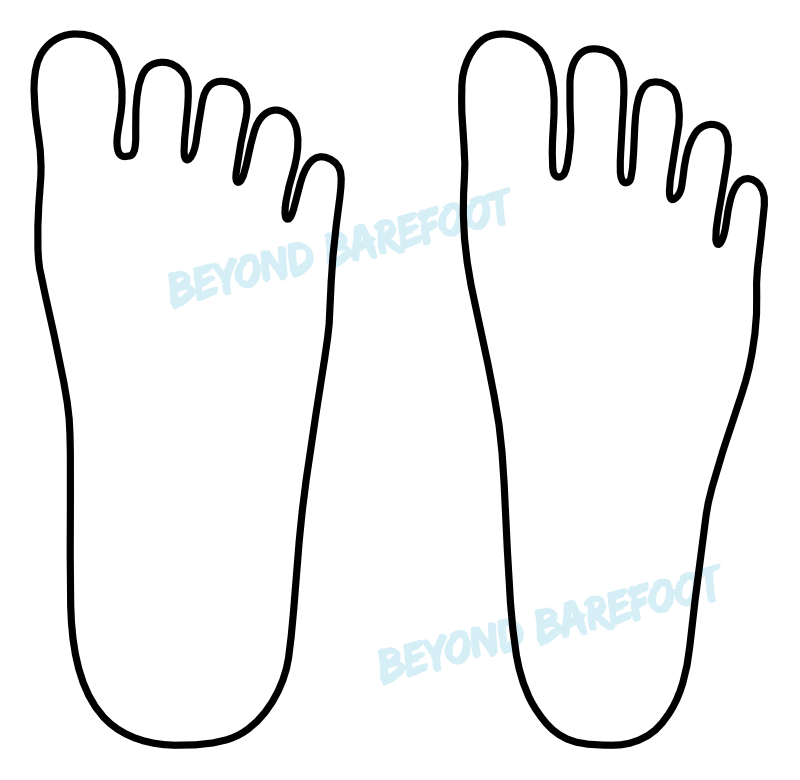
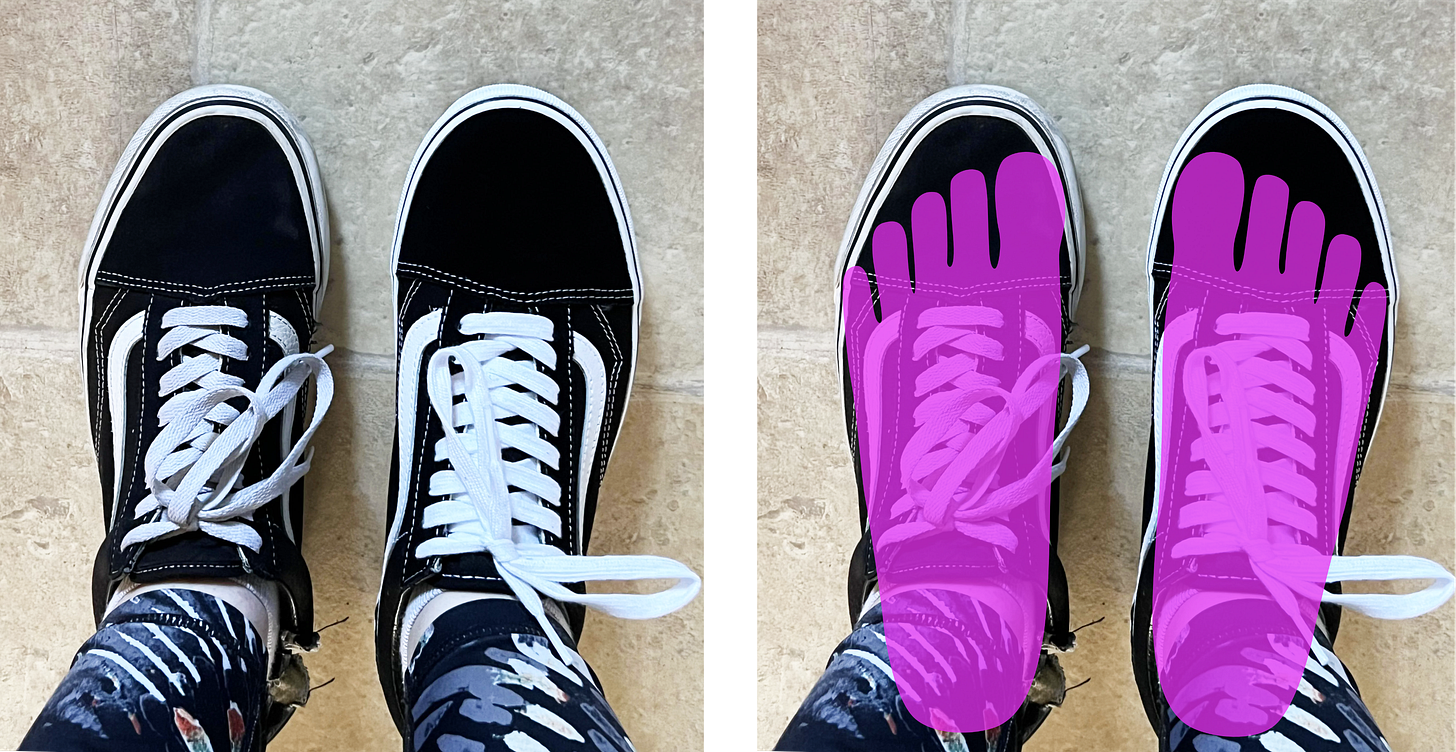
SUCH a great read - thank you for all this great research! Do you have any recommendations for readily-available 'combination width' shoes? I haven't really had luck finding them anywhere, other than custom ice skates...